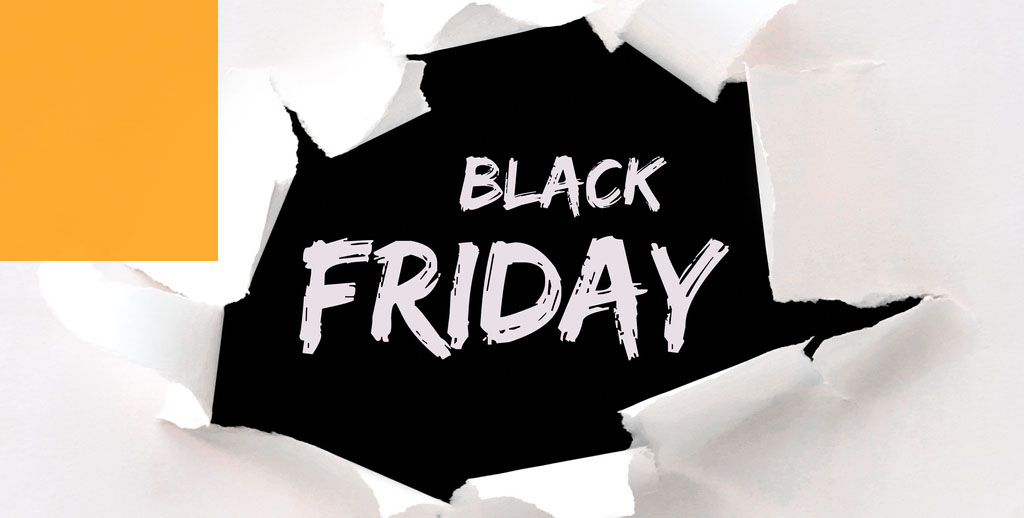Every year, we warn of the disastrous consequences of the discount orgies that many providers offer at the end of November. Whether they are called Black Friday, Cyber Monday, or “lilac-blue Wednesday”—it is always the same fiasco. And each year, we observe how it repeats itself with numerous suppliers in all industries.
While adopting this marketing concept from the USA to Europe makes little sense simply because of different purchasing traditions, only a few suppliers will be dissuaded from doing so because everyone else is doing it and because it looks—at least in the short term—as if the companies will generate the sales of the year in this special time window.
Blinded by short-term increases in sales figures, the long-term adverse effects on the customers’ price acceptance and the brand itself are often ignored. And yet, they are clearly visible.
How discounts affect margin and your customer base in the long-term
You probably are familiar with this: As high as the turnover might be during Black Friday, it is just as low in the weeks before and after this artificially generated marketing coup—justifiably so from a customer perspective. After all, why should anyone buy a product at the regular price if it is likely to be cheaper during Black Friday?
During the hunt for the best deal, customers wait patiently and fill their wish lists and shopping baskets until the time comes. Only then will they make their purchases and buy enough at a special price to keep them supplied until the next big sale. The sales figures simply shift and, therefore, concentrate on the specific time period of Black Friday.
What is a true joy for consumers can be a vicious circle for companies. Most of them are unaware of the effects of such promotions, and thus they handle them too arbitrarily. Many enterprises are not aware that by participating in Black Friday, they not only attract an (additional) group of buyers who are primarily interested in discounts (“bargain hunters”) but also deter existing customer groups whose price acceptance is generally high but destroyed by discounting – such price promotions can even retrain customer groups such as “routine buyers” or “price accepters” to become bargain hunters!
Give him an inch and he'll take an ell
One thing is certain – from year to year, more discounts must be granted to maintain and increase sales: While last year “only” discounting selected stocks was sufficient, the next year EVERYTHING has to be reduced. If the previous year, discounts were only given on Black Friday, the next year it must be Black Friday Week. Or one directly follows the example of Media Markt in Germany and proclaims a whole Black November.
This is why many companies that jumped on the discount bandwagon find it difficult or even impossible to jump off and return to the regular price.
That is why this year we reveal six of many more strategies for the future that will help you give discounts without significantly damaging your margin and the price acceptance of your customers:
1. Offer credit instead of discounts
Offer your customers credit instead of discounts. Compared to discounts, the credit does not expire. It is product-independent and thus more flexible and motivating from the customer’s point of view. Credit does not ruin your established price points and will be used up at some point, while discounts are expected time and time again.
2. Demand something in return instead of “just” giving discounts
Always ask for something in return for any discount you give. Define minimum purchase amounts, deadlines, shopping cart requirements, new customer acquisition, or the like. A discount without something in return ruins the price acceptance even more and makes your regular prices appear even more arbitrary.
3. Use triggers instead of giving discounts
Everybody expects a Black Friday offer to be something special that they can take advantage of – it does not even have to be cheaper!
A daily newspaper in Denmark, for example, has even increased the price of a trial subscription on Black Friday from DKK 0 to DKK 70 and was still able to increase the number of subscriptions significantly. This shows that customers rarely know your prices. So you can take advantage of the expectation of reduced prices without lowering them. The more courageous can even try to raise them. Thanks to Black Friday, customers will still think they have found the bargain of the year.
4. Less is more
If you must participate, never do it with your entire product range!
Never give “X% off everything” but only give selective discounts! Never engage
in a discount battle with the entire product range because it
will cost you a lot of margins. A few wisely chosen products as “bait” are enough to attract the attention of your customers. Discounts should be given to products bought spontaneously (i.e., which the customer would not have bought without a discount). Products for everyday use, which are always in demand, should not be discounted.
5. Euros instead of percentages
Consumers do not convert percentages into Euro when buying. Instead of giving a significant percentage discount – as expected in the context of Black Friday – it may be better to reduce the price by a “round Euro” amount. For example, instead of giving a 30% discount on €120, make it easier for the interested party and give €40 off the price. This is easier for customers to process than an abstract percentage. Besides, this prevents a comparison of discounts with competitors.
6. Focus on products instead of discounts
Instead of giving discounts in the form of percentages or monetary amounts, you can also shift the focus to products or services by selling them exclusively on Black Friday. Another alternative could be to launch an exclusive Black Friday edition of a product, e.g. in black instead of the usual white – this discount strategy has just been chosen by the Dyson company for Black Friday. This way, you do not have to sacrifice margin, nor does it damage your customers’ price acceptance.
If you follow only some of these six strategies in the future, you can escape at least a part of the negative consequences of this discounting mania. After all, the origin of the high demand for discounts lies not in the customers themselves but the companies’ pricing strategy.
What is your company’s strategy during Black Friday? What do you think of the American marketing concept in Europe? Please feel free to write to us. We are looking forward to hearing from you!
Interesting? Then, the following articles might be worth reading as well:
- Un-casting the discounting spell
- Price acceptance, not willingness to pay – a concept for better pricing

Vocatus Member of the Executive Board
Or learn more about the other four types of buyers besides bargain hunters. Because most of the time, it is not primarily the bargain hunter who can be found in your customer base, but a completely different type of buyer.
If you have any further questions, contact florian-bauer@vocatus.de.




